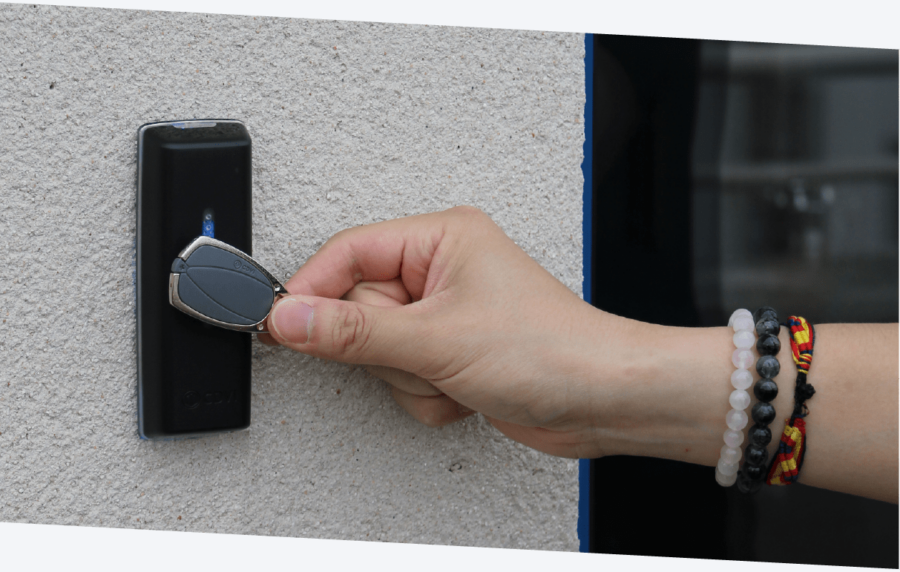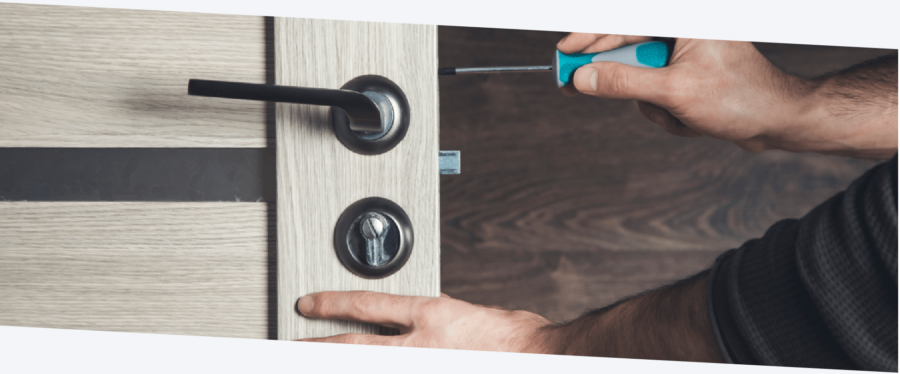Every access control system is different. And every site is different. That means every project you embark on has completely unique requirements. With so many different components working together to form an access control system, it’s hard to keep track of everything you need to know. Fortunately, we’re here to help!
We asked our expert specialists in the CDVI Technical Support team about the most common mistakes they see reported to them from installers. Read on and see if there’s anything you could change to make your next project successful!
1. Installing readers and exit buttons too close to the door
We know what you’re thinking – the readers and exit buttons have to be close to the door, don’t they? Yes, they do. But if the door is also fitted with a strike lock, it’s often a better idea to move the readers and exit buttons just a little further away. If these components are fitted in a location where the user can’t push or pull the door at the same time, you’ll avoid the damaging effects of side load.
When a user swipes a card or pushes an exit button, there is a brief wait period before the access control system releases the lock to allow them access. If the user pushes or pulls on the door before this happens, it causes the strike’s jaw to jam against the latch. Over a long period of time, side load can potentially damage the lock mechanism.

2. Getting the cable length wrong
We see this one all the time. If your cable is too long or too small and your power supply isn’t powerful enough, you could see current dropping over a distance. This is a particular issue with electro-magnetic locks, shearlocks, and solenoid bolts. As these components generally require a higher current draw, you could have problems if your cable is too long. If this occurs, your maglock might fail to hold against the armature plate, or the pins in your shearlock or solenoid bolt might fail to fire.
3. Armature plates fitted too tightly
Electro-magnetic locks work by generating a powerful magnetic field when power is applied, causing the magnet and its armature plate to hold together. One of the most common errors we see in maglock installations is actually a case of doing too much. The bolt on your armature plate should not be tightened all the way. Instead, you should leave it a little slack. This is to allow the armature to move a small amount, in order to align itself properly with the face of the magnet. Some magnets are also accompanied by a rubber bush that should be fitted on the bolt for the same purpose.
4. Fail safe and fail secure circuits
Fail safe and fail secure is one of those things that is confusing and easy to mix up. We have all done it! And in some cases, it can take years for the difference to really sink in. Something we see all the time is mistakes relating to the circuit types needed for either fail safe or fail secure systems which include more than one device. For example, imagine your system includes both a video intercom door station and an exit trigger button. If you want a fail safe setup, you need to connect the devices in series. This will ensure that power is dropped from any device in the series. Alternatively, if you want a fail secure setup, you’ll need parallel connections so that power can be applied from any device.

5. Not attending CDVI Academy training
Okay, we admit we might be biased, but we think CDVI Academy is the best place in the world for learning how to successfully install access control systems. Our expert trainers have years of experience and will walk you through everything you need to know. They’ll also answer all those questions that have been bothering you for ages.
And it’s all free!